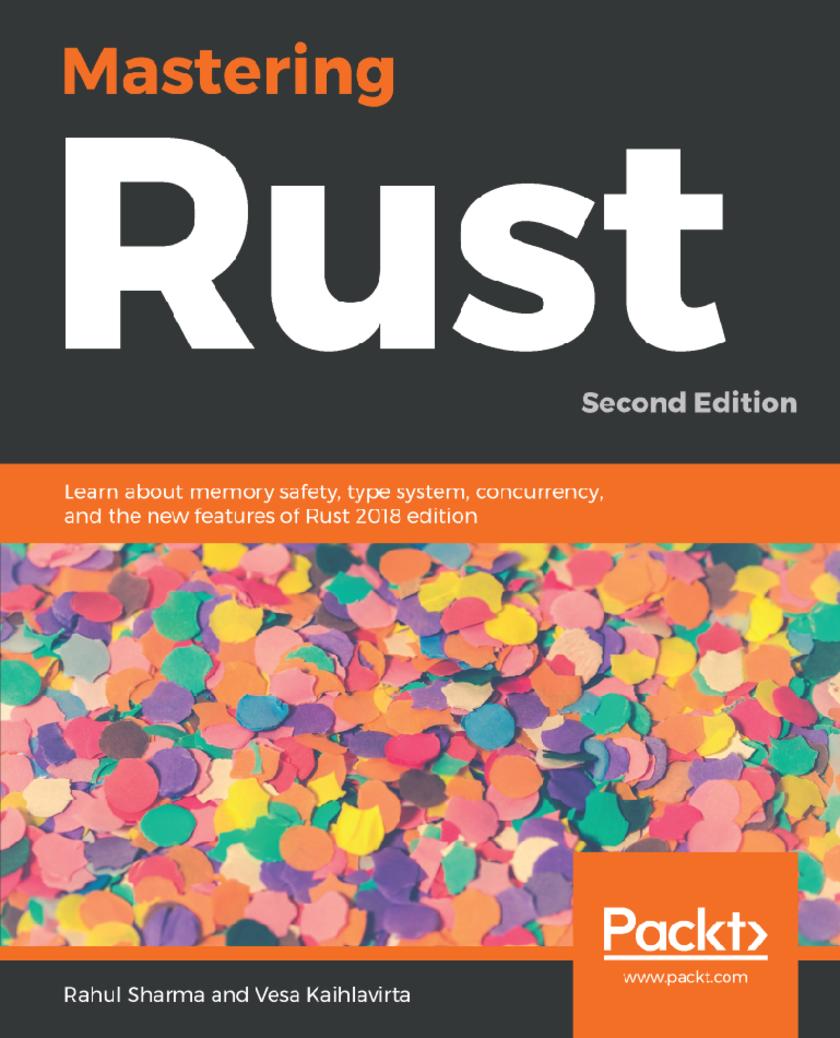
Mastering Rust
¥90.46
Become proficient in designing, developing and deploying effective software systems using the advanced constructs of Rust Key Features * Improve your productivity using the latest version of Rust and write simpler and easier code * Understand Rust’s immutability and ownership principle, expressive type system, safe concurrency * Deep dive into the new doamins of Rust like WebAssembly, Networking and Command line tools Book Description Rust is an empowering language that provides a rare combination of safety, speed, and zero-cost abstractions. Mastering Rust – Second Edition is filled with clear and simple explanations of the language features along with real-world examples, showing you how you can build robust, scalable, and reliable programs. This second edition of the book improves upon the previous one and touches on all aspects that make Rust a great language. We have included the features from latest Rust 2018 edition such as the new module system, the smarter compiler, helpful error messages, and the stable procedural macros. You’ll learn how Rust can be used for systems programming, network programming, and even on the web. You’ll also learn techniques such as writing memory-safe code, building idiomatic Rust libraries, writing efficient asynchronous networking code, and advanced macros. The book contains a mix of theory and hands-on tasks so you acquire the skills as well as the knowledge, and it also provides exercises to hammer the concepts in. After reading this book, you will be able to implement Rust for your enterprise projects, write better tests and documentation, design for performance, and write idiomatic Rust code. What you will learn * Write generic and type-safe code by using Rust’s powerful type system * How memory safety works without garbage collection * Know the different strategies in error handling and when to use them * Learn how to use concurrency primitives such as threads and channels * Use advanced macros to reduce boilerplate code * Create efficient web applications with the Actix-web framework * Use Diesel for type-safe database interactions in your web application Who this book is for The book is aimed at beginner and intermediate programmers who already have familiarity with any imperative language and have only heard of Rust as a new language. If you are a developer who wants to write robust, efficient and maintainable software systems and want to become proficient with Rust, this book is for you. It starts by giving a whirlwind tour of the important concepts of Rust and covers advanced features of the language in subsequent chapters using code examples that readers will find useful to advance their knowledge.

Learn Spring for Android Application Development
¥90.46
A hands-on guide to Android programming with Spring MVC, Spring Boot, and Spring Security Key Features * Build native Android applications with Spring for Android * Explore Reactive programming, concurrency, and multithreading paradigms for building fast and efficient applications * Write more expressive and robust code with Kotlin using its coroutines and other latest features Book Description As the new official language for Android, Kotlin is attracting new as well as existing Android developers. As most developers are still working with Java and want to switch to Kotlin, they find a combination of these two appealing. This book addresses this interest by bringing together Spring, a widely used Java SE framework for building enterprise-grade applications, and Kotlin. Learn Spring for Android Application Development will guide you in leveraging some of the powerful modules of the Spring Framework to build lightweight and robust Android apps using Kotlin. You will work with various modules, such as Spring AOP, Dependency Injection, and Inversion of Control, to develop applications with better dependency management. You’ll also explore other modules of the Spring Framework, such as Spring MVC, Spring Boot, and Spring Security. Each chapter has practice exercises at the end for you to assess your learning. By the end of the book, you will be fully equipped to develop Android applications with Spring technologies. What you will learn * Get to grips with the basics of the Spring Framework * Write web applications using the Spring Framework with Kotlin * Develop Android apps with Kotlin * Connect a RESTful web service with your app using Retrofilt * Understand JDBC, JPA, MySQL for Spring and SQLite Room for Android * Explore Spring Security fundamentals, Basic Authentication, and OAuth2 * Delve into Concurrency and Reactive programming using Kotlin * Develop testable applications with Spring and Android Who this book is for If you’re an aspiring Android developer or an existing developer who wants to learn how to use Spring to build robust Android applications in Kotlin, this book is for you. Though not necessary, basic knowledge of Spring will assist with understanding key concepts covered in this book.

Implementing AWS: Design, Build, and Manage your Infrastructure
¥90.46
Work through exciting recipes to administer your AWS cloud Key Features * Build secure environments using AWS components and services * Explore core AWS features with real-world applications and best practices * Design and build Lambda functions using real-world examples Book Description With this Learning Path, you’ll explore techniques to easily manage applications on the AWS cloud. You’ll begin with an introduction to serverless computing, its advantages, and the fundamentals of AWS. The following chapters will guide you on how to manage multiple accounts by setting up consolidated billing, enhancing your application delivery skills, with the latest AWS services such as CodeCommit, CodeDeploy, and CodePipeline to provide continuous delivery and deployment, while also securing and monitoring your environment's workflow. It’ll also add to your understanding of the services AWS Lambda provides to developers. To refine your skills further, it demonstrates how to design, write, test, monitor, and troubleshoot Lambda functions. By the end of this Learning Path, you’ll be able to create a highly secure, fault-tolerant, and scalable environment for your applications. This Learning Path includes content from the following Packt products: * AWS Administration: The Definitive Guide, Second Edition by Yohan Wadia * AWS Administration Cookbook by Rowan Udell, Lucas Chan * Mastering AWS Lambda by Yohan Wadia, Udita Gupta What you will learn * Explore the benefits of serverless computing and applications * Deploy apps with AWS Elastic Beanstalk and Amazon Elastic File System * Secure environments with AWS CloudTrail, AWSConfig, and AWS Shield * Run big data analytics with Amazon EMR and Amazon Redshift * Back up and safeguard data using AWS Data Pipeline * Create monitoring and alerting dashboards using CloudWatch * Effectively monitor and troubleshoot serverless applications with AWS * Design serverless apps via AWS Lambda, DynamoDB, and API Gateway Who this book is for This Learning Path is specifically designed for IT system and network administrators, AWS architects, and DevOps engineers who want to effectively implement AWS in their organization and easily manage daily activities. Familiarity with Linux, web services, cloud computing platforms, virtualization, networking, and other administration-related tasks will assist in understanding the concepts in the book. Prior hands-on experience with AWS core services such as EC2, IAM, S3, and programming languages, such as Node.Js, Java, and C#, will also prove beneficial.
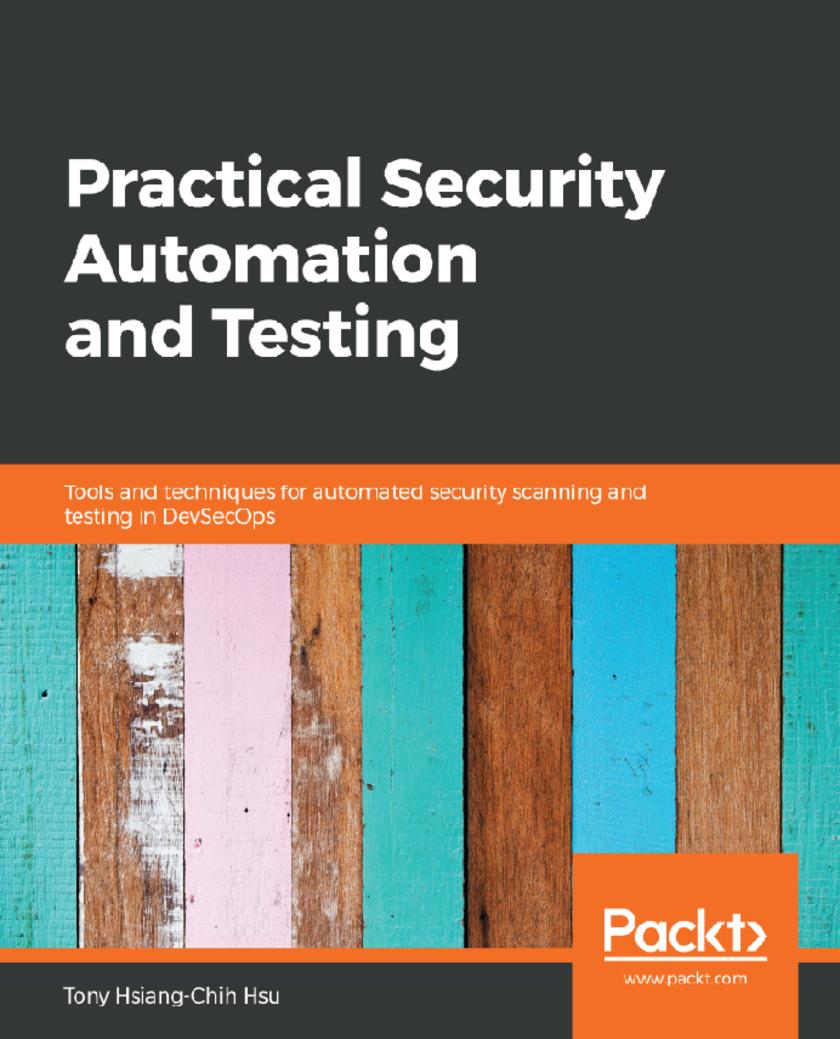
Practical Security Automation and Testing
¥73.02
Your one stop guide to automating infrastructure security using DevOps and DevSecOps Key Features * Secure and automate techniques to protect web, mobile or cloud services * Automate secure code inspection in C++, Java, Python, and JavaScript * Integrate security testing with automation frameworks like fuzz, BDD, Selenium and Robot Framework Book Description Security automation is the automatic handling of software security assessments tasks. This book helps you to build your security automation framework to scan for vulnerabilities without human intervention. This book will teach you to adopt security automation techniques to continuously improve your entire software development and security testing. You will learn to use open source tools and techniques to integrate security testing tools directly into your CI/CD framework. With this book, you will see how to implement security inspection at every layer, such as secure code inspection, fuzz testing, Rest API, privacy, infrastructure security, and web UI testing. With the help of practical examples, this book will teach you to implement the combination of automation and Security in DevOps. You will learn about the integration of security testing results for an overall security status for projects. By the end of this book, you will be confident implementing automation security in all layers of your software development stages and will be able to build your own in-house security automation platform throughout your mobile and cloud releases. What you will learn * Automate secure code inspection with open source tools and effective secure code scanning suggestions * Apply security testing tools and automation frameworks to identify security vulnerabilities in web, mobile and cloud services * Integrate security testing tools such as OWASP ZAP, NMAP, SSLyze, SQLMap, and OpenSCAP * Implement automation testing techniques with Selenium, JMeter, Robot Framework, Gauntlt, BDD, DDT, and Python unittest * Execute security testing of a Rest API Implement web application security with open source tools and script templates for CI/CD integration * Integrate various types of security testing tool results from a single project into one dashboard Who this book is for The book is for software developers, architects, testers and QA engineers who are looking to leverage automated security testing techniques.
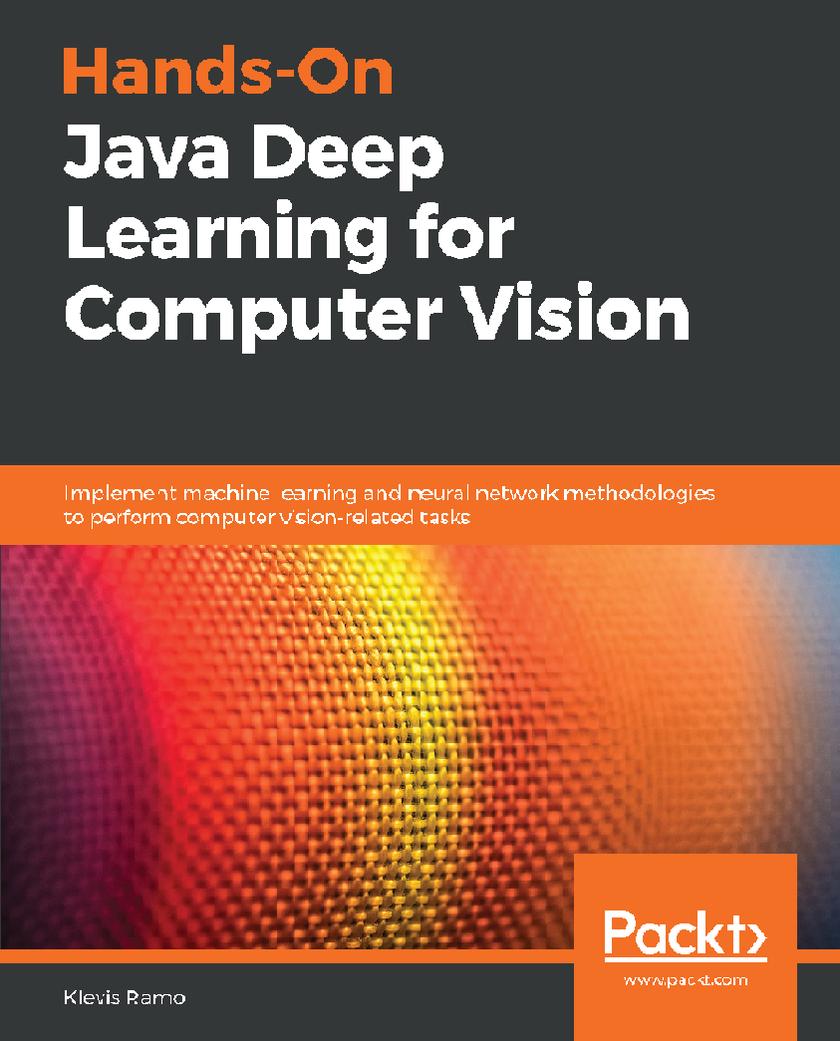
Hands-On Java Deep Learning for Computer Vision
¥54.49
Leverage the power of Java and deep learning to build production-grade Computer Vision applications Key Features * Build real-world Computer Vision applications using the power of neural networks * Implement image classification, object detection, and face recognition * Know best practices on effectively building and deploying deep learning models in Java Book Description Although machine learning is an exciting world to explore, you may feel confused by all of its theoretical aspects. As a Java developer, you will be used to telling the computer exactly what to do, instead of being shown how data is generated; this causes many developers to struggle to adapt to machine learning. The goal of this book is to walk you through the process of efficiently training machine learning and deep learning models for Computer Vision using the most up-to-date techniques. The book is designed to familiarize you with neural networks, enabling you to train them efficiently, customize existing state-of-the-art architectures, build real-world Java applications, and get great results in a short space of time. You will build real-world Computer Vision applications, ranging from a simple Java handwritten digit recognition model to real-time Java autonomous car driving systems and face recognition models. By the end of this book, you will have mastered the best practices and modern techniques needed to build advanced Computer Vision Java applications and achieve production-grade accuracy. What you will learn * Discover neural networks and their applications in Computer Vision * Explore the popular Java frameworks and libraries for deep learning * Build deep neural networks in Java * Implement an end-to-end image classification application in Java * Perform real-time video object detection using deep learning * Enhance performance and deploy applications for production Who this book is for This book is for data scientists, machine learning developers and deep learning practitioners with Java knowledge who want to implement machine learning and deep neural networks in the computer vision domain. You will need to have a basic knowledge of Java programming.
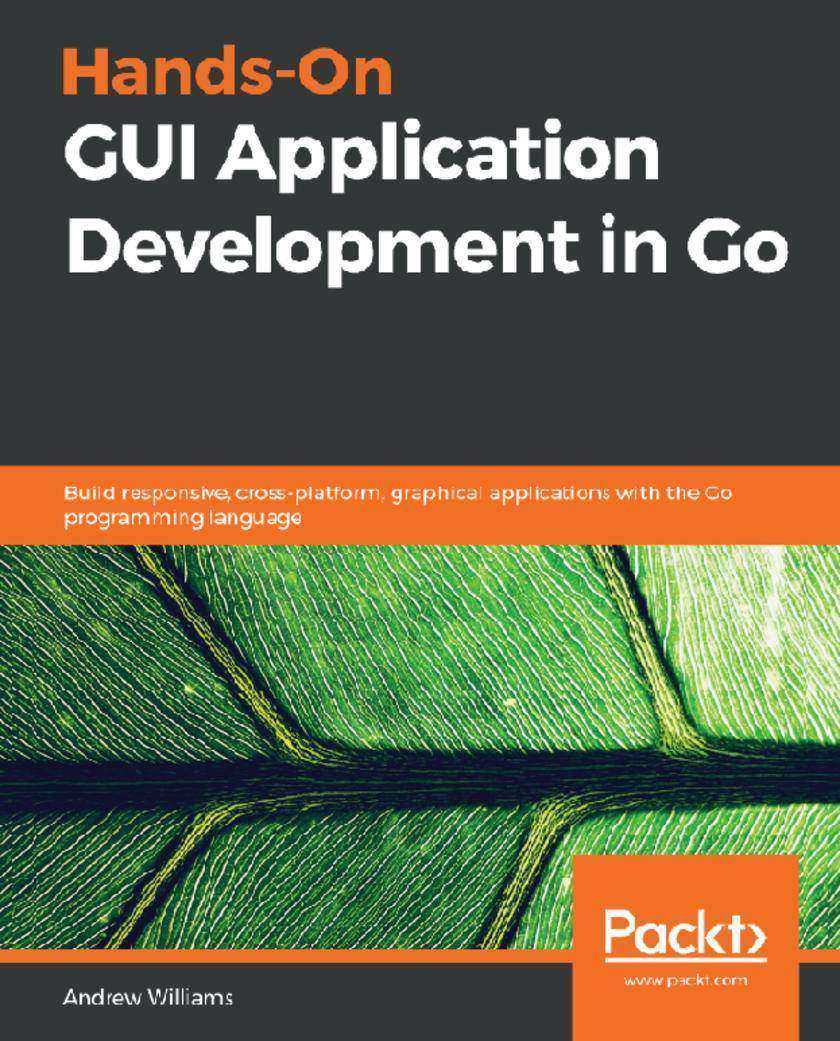
Hands-On GUI Application Development in Go
¥81.74
Discover Golang's GUI libraries such as Go-GTK (GIMP Toolkit) and Go-Qt and build beautiful, performant, and responsive graphical applications Key Features * Conceptualize and build state-of-art GUI applications with Golang (Go) * Tackle the complexity of varying GUI application sizes with a structured and scalable approach * Get hands-on experience of GUI development with Shiny, and labs/ui, Fyne, and Walk Book Description Go is often compared to C++ when it comes to low-level programming and implementations that require faster processing, such as Graphical User Interfaces (GUIs). In fact, many claim that Go is superior to C++ in terms of its concurrency and ease of use. Most graphical application toolkits, though, are still written using C or C++, and so they don't enjoy the benefits of using a modern programming language such as Go. This guide to programming GUIs with Go 1.11 explores the various toolkits available, including UI, Walk, Shiny, and Fyne. The book compares the vision behind each project to help you pick the right approach for your project. Each framework is described in detail, outlining how you can build performant applications that users will love. To aid you further in creating applications using these emerging technologies, you'll be able to easily refer to code samples and screenshots featured in the book. In addition to toolkit-specific discussions, you'll cover more complex topics, such as how to structure growing graphical applications, and how cross-platform applications can integrate with each desktop operating system to create a seamless user experience. By delving into techniques and best practices for organizing and scaling Go-based graphical applications, you'll also glimpse Go's impressive concurrency system. In the concluding chapters, you'll discover how to distribute to the main desktop marketplaces and distribution channels. By the end of this book, you'll be a confident GUI developer who can use the Go language to boost the performance of your applications. What you will learn * Understand the benefits and complexities of building native graphical applications * Gain insights into how Go makes cross-platform graphical application development simple * Build platform-native GUI applications using andlabs/ui * Develop graphical Windows applications using Walk * Create multiplatform GUI applications using Shiny, Nuklear, and Fyne * Use Go wrappers for GTK and Qt for GUI application development * Streamline your requirements to pick the correct toolkit strategy Who this book is for This book is designed for Go developers who are interested in building native graphical applications for desktop computers and beyond. Some knowledge of building applications using Go is useful, but not essential. Experience in developing GUIs is not required as the book explores the benefits and challenges they pose. This book will also be beneficial for GUI application developers who are interested in trying Go.
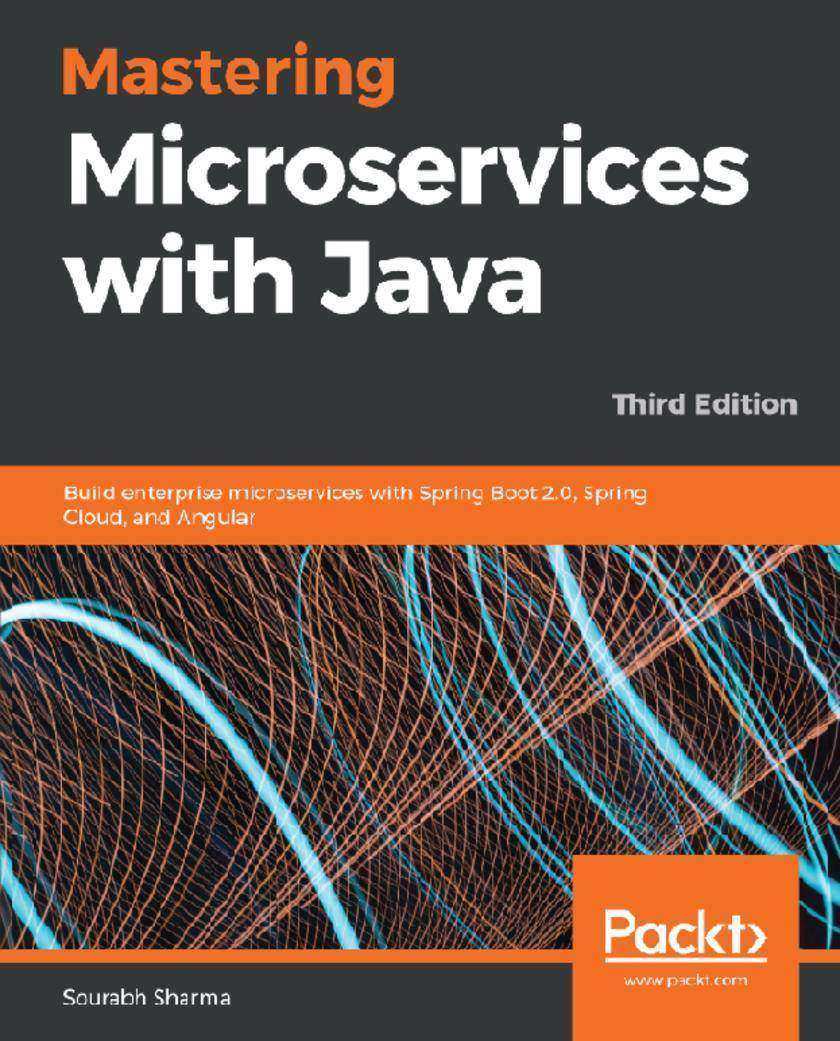
Mastering Microservices with Java
¥81.74
Master the art of implementing scalable and reactive microservices in your production environment with Java 11 Key Features * Use domain-driven designs to build microservices * Explore various microservices design patterns such as service discovery, registration, and API Gateway * Use Kafka, Avro, and Spring Streams to implement event-based microservices Book Description Microservices are key to designing scalable, easy-to-maintain applications. This latest edition of Mastering Microservices with Java, works on Java 11. It covers a wide range of exciting new developments in the world of microservices, including microservices patterns, interprocess communication with gRPC, and service orchestration. This book will help you understand how to implement microservice-based systems from scratch. You'll start off by understanding the core concepts and framework, before focusing on the high-level design of large software projects. You'll then use Spring Security to secure microservices and test them effectively using REST Java clients and other tools. You will also gain experience of using the Netflix OSS suite, comprising the API Gateway, service discovery and registration, and Circuit Breaker. Additionally, you'll be introduced to the best patterns, practices, and common principles of microservice design that will help you to understand how to troubleshoot and debug the issues faced during development. By the end of this book, you'll have learned how to build smaller, lighter, and faster services that can be implemented easily in a production environment. What you will learn * Use domain-driven designs to develop and implement microservices * Understand how to implement microservices using Spring Boot * Explore service orchestration and distributed transactions using the Sagas * Discover interprocess communication using REpresentational State Transfer (REST) and events * Gain knowledge of how to implement and design reactive microservices * Deploy and test various microservices Who this book is for This book is designed for Java developers who are familiar with microservices architecture and now want to effectively implement microservices at an enterprise level. Basic knowledge and understanding of core microservice elements and applications is necessary.
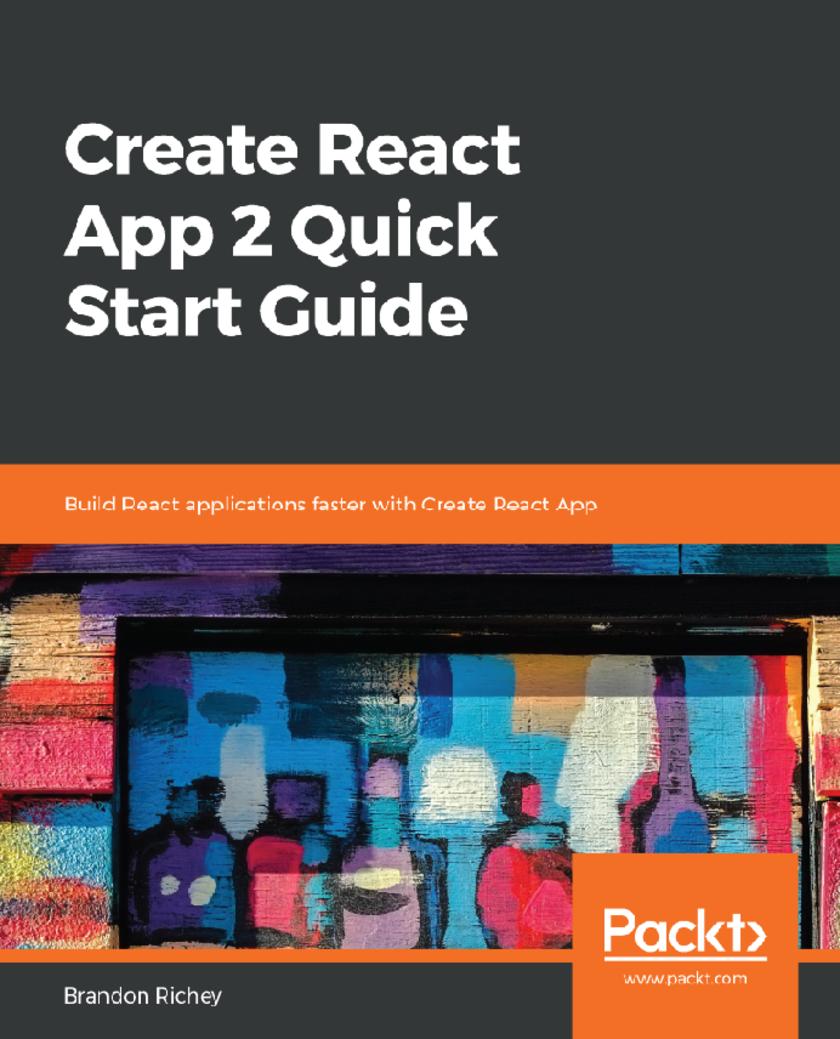
Create React App 2 Quick Start Guide
¥54.49
Integrate your React applications with React to build efficient web services. Key Features * Learn React by building applications with Create React App * Create interactive UIs exploring the latest feature of CRA 2.0 * Build Progressive Web Applications for a more seamless web Book Description If you're a power user and you aren’t happy always reusing default configurations, from previous applications with each new application, then all you need is Create React App (CRA), a tool in the React ecosystem designed to help you create boilerplate code for building a web frontend. This book will help you use CRA to write React programs without significant configuration-related difficulties. With this quick start guide, you will integrate your applications with React to build efficient professional web services.You will learn to design UIs with the features of CRA and template your React applications. By the end of the book, you will be sufficiently skilled to be able to build faster and effective React apps using CRA. What you will learn * Become familiar with React by building applications with Create React App * Make your frontend development hassle free * Create interactive UIs exploring the latest features of CRA 2 * Build modern, React projects with, SASS,and progressive web applications * Develop proxy backend servers and simulate interaction with a full backend * Keep your application fully tested and maintain confidence in your project Who this book is for The book is intended for the web developers who want to jump into building great frontend with React using easy templating solutions.
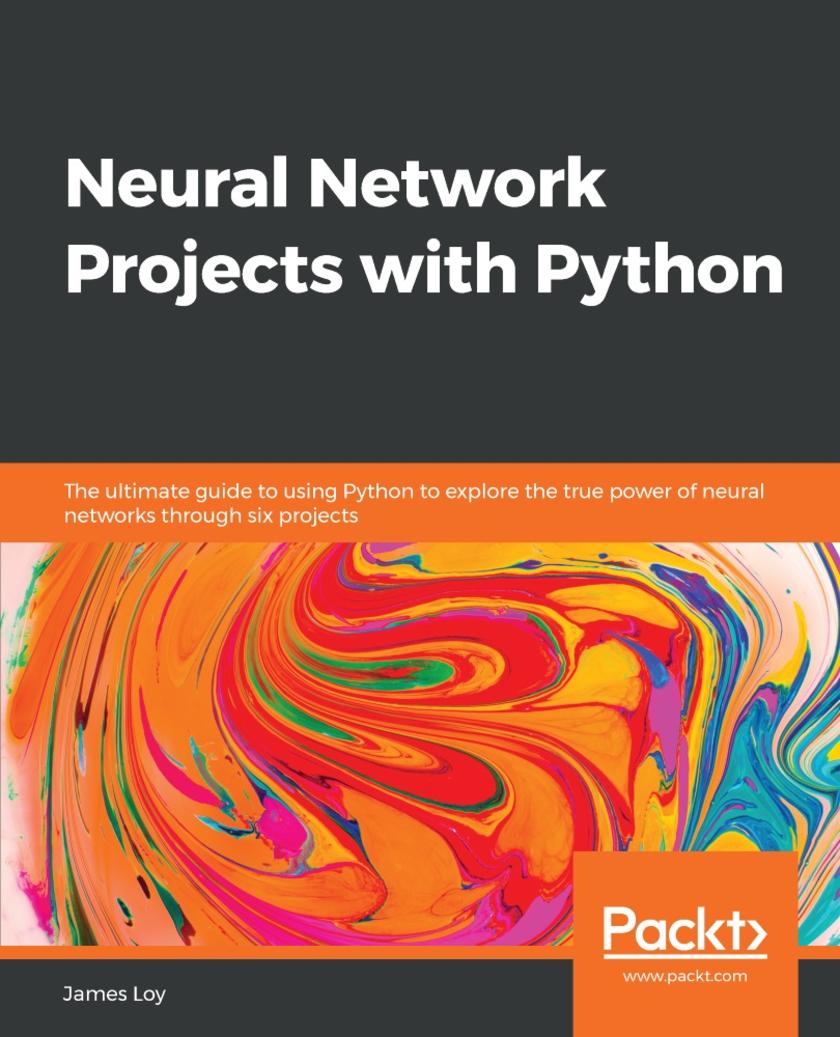
Neural Network Projects with Python
¥73.02
Build your Machine Learning portfolio by creating 6 cutting-edge Artificial Intelligence projects using neural networks in Python Key Features * Discover neural network architectures (like CNN and LSTM) that are driving recent advancements in AI * Build expert neural networks in Python using popular libraries such as Keras * Includes projects such as object detection, face identification, sentiment analysis, and more Book Description Neural networks are at the core of recent AI advances, providing some of the best resolutions to many real-world problems, including image recognition, medical diagnosis, text analysis, and more. This book goes through some basic neural network and deep learning concepts, as well as some popular libraries in Python for implementing them. It contains practical demonstrations of neural networks in domains such as fare prediction, image classification, sentiment analysis, and more. In each case, the book provides a problem statement, the specific neural network architecture required to tackle that problem, the reasoning behind the algorithm used, and the associated Python code to implement the solution from scratch. In the process, you will gain hands-on experience with using popular Python libraries such as Keras to build and train your own neural networks from scratch. By the end of this book, you will have mastered the different neural network architectures and created cutting-edge AI projects in Python that will immediately strengthen your machine learning portfolio. What you will learn * Learn various neural network architectures and its advancements in AI * Master deep learning in Python by building and training neural network * Master neural networks for regression and classification * Discover convolutional neural networks for image recognition * Learn sentiment analysis on textual data using Long Short-Term Memory * Build and train a highly accurate facial recognition security system Who this book is for This book is a perfect match for data scientists, machine learning engineers, and deep learning enthusiasts who wish to create practical neural network projects in Python. Readers should already have some basic knowledge of machine learning and neural networks.
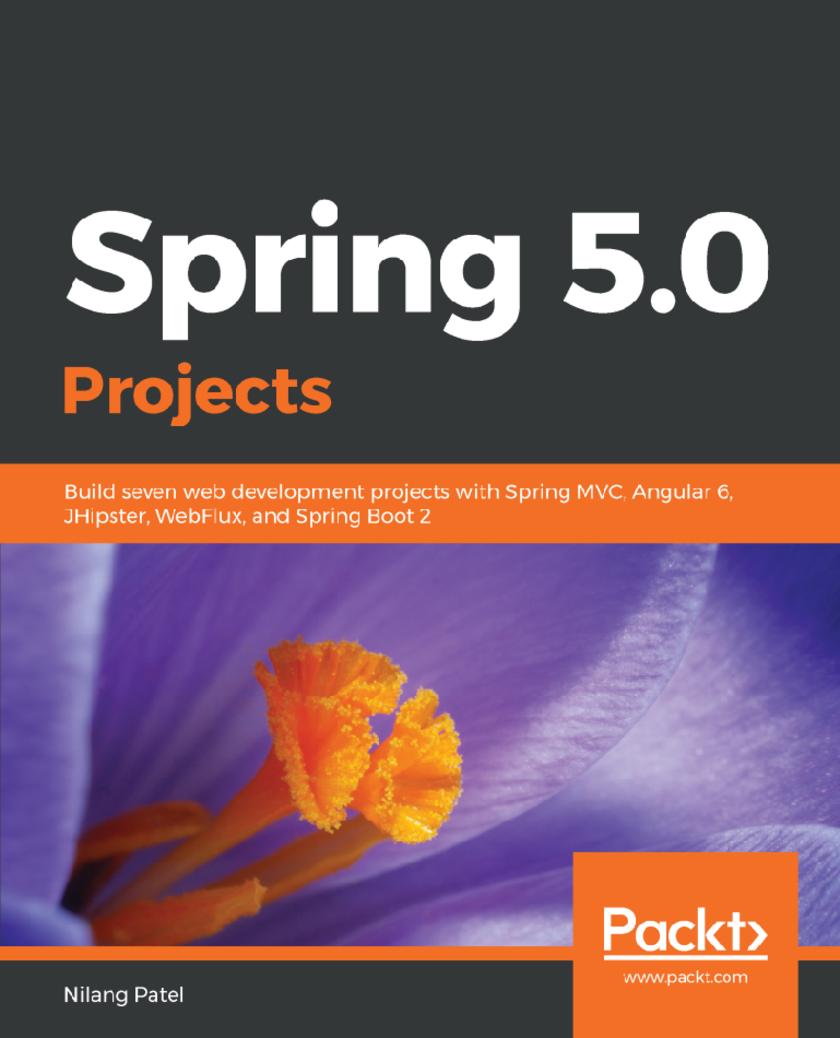
Spring 5.0 Projects
¥81.74
Discover the latest features of Spring framework by building robust, fast, and reactive web applications Key Features * Take advantage of all the features of Spring 5.0 with third party tools to build a robust back end * Secure Spring based web application using Spring Security framework with LDAP and OAuth protocol * Develop robust and scalable microservice based applications on Spring Cloud, using Spring Boot Book Description Spring makes it easy to create RESTful applications, merge with social services, communicate with modern databases, secure your system, and make your code modular and easy to test. With the arrival of Spring Boot, developers can really focus on the code and deliver great value, with minimal contour. This book will show you how to build various projects in Spring 5.0, using its features and third party tools. We'll start by creating a web application using Spring MVC, Spring Data, the World Bank API for some statistics on different countries, and MySQL database. Moving ahead, you'll build a RESTful web services application using Spring WebFlux framework. You'll be then taken through creating a Spring Boot-based simple blog management system, which uses Elasticsearch as the data store. Then, you'll use Spring Security with the LDAP libraries for authenticating users and create a central authentication and authorization server using OAuth 2 protocol. Further, you'll understand how to create Spring Boot-based monolithic application using JHipster. Toward the end, we'll create an online book store with microservice architecture using Spring Cloud and Net?ix OSS components, and a task management system using Spring and Kotlin. By the end of the book, you'll be able to create coherent and ?exible real-time web applications using Spring Framework. What you will learn * Build Spring based application using Bootstrap template and JQuery * Understand the Spring WebFlux framework and how it uses Reactor library * Interact with Elasticsearch for indexing, querying, and aggregating data * Create a simple monolithic application using JHipster * Use Spring Security and Spring Security LDAP and OAuth libraries for Authentication * Develop a microservice-based application with Spring Cloud and Netflix * Work on Spring Framework with Kotlin Who this book is for This book is for competent Spring developers who wish to understand how to develop complex yet flexible applications with Spring. You must have a good knowledge of Java programming and be familiar with the basics of Spring.
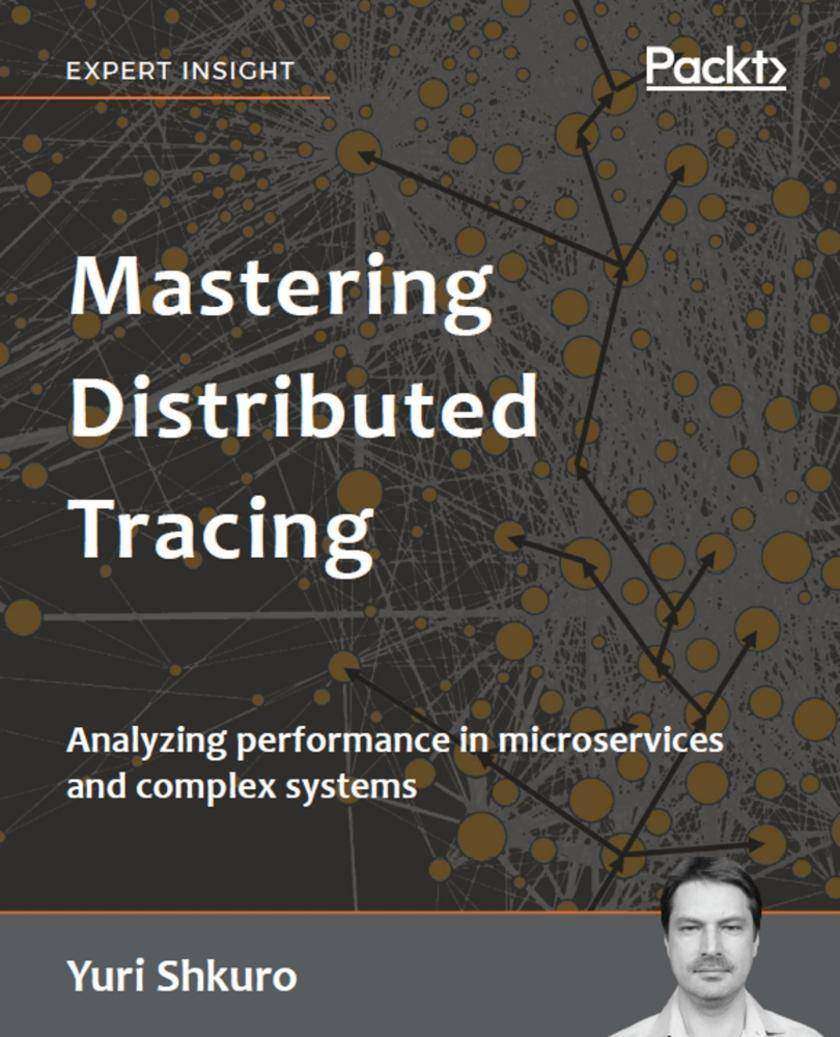
Mastering Distributed Tracing
¥90.46
Understand how to apply distributed tracing to microservices-based architectures Key Features * A thorough conceptual introduction to distributed tracing * An exploration of the most important open standards in the space * A how-to guide for code instrumentation and operating a tracing infrastructure Book Description Mastering Distributed Tracing will equip you to operate and enhance your own tracing infrastructure. Through practical exercises and code examples, you will learn how end-to-end tracing can be used as a powerful application performance management and comprehension tool. The rise of Internet-scale companies, like Google and Amazon, ushered in a new era of distributed systems operating on thousands of nodes across multiple data centers. Microservices increased that complexity, often exponentially. It is harder to debug these systems, track down failures, detect bottlenecks, or even simply understand what is going on. Distributed tracing focuses on solving these problems for complex distributed systems. Today, tracing standards have developed and we have much faster systems, making instrumentation less intrusive and data more valuable. Yuri Shkuro, the creator of Jaeger, a popular open-source distributed tracing system, delivers end-to-end coverage of the field in Mastering Distributed Tracing. Review the history and theoretical foundations of tracing; solve the data gathering problem through code instrumentation, with open standards like OpenTracing, W3C Trace Context, and OpenCensus; and discuss the benefits and applications of a distributed tracing infrastructure for understanding, and profiling, complex systems. What you will learn * How to get started with using a distributed tracing system * How to get the most value out of end-to-end tracing * Learn about open standards in the space * Learn about code instrumentation and operating a tracing infrastructure * Learn where distributed tracing fits into microservices as a core function Who this book is for Any developer interested in testing large systems will find this book very revealing and in places, surprising. Every microservice architect and developer should have an insight into distributed tracing, and the book will help them on their way. System administrators with some development skills will also benefit. No particular programming language skills are required, although an ability to read Java, while non-essential, will help with the core chapters.
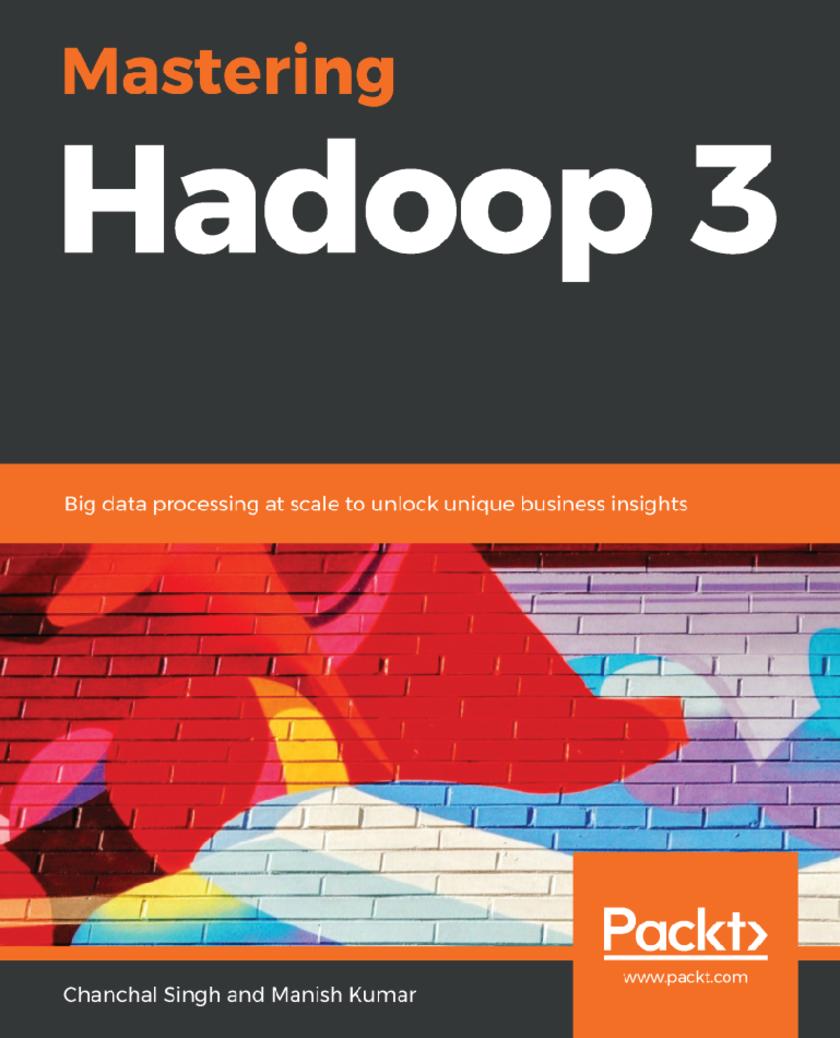
Mastering Hadoop 3
¥99.18
A comprehensive guide to mastering the most advanced Hadoop 3 concepts Key Features * Get to grips with the newly introduced features and capabilities of Hadoop 3 * Crunch and process data using MapReduce, YARN, and a host of tools within the Hadoop ecosystem * Sharpen your Hadoop skills with real-world case studies and code Book Description Apache Hadoop is one of the most popular big data solutions for distributed storage and for processing large chunks of data. With Hadoop 3, Apache promises to provide a high-performance, more fault-tolerant, and highly efficient big data processing platform, with a focus on improved scalability and increased efficiency. With this guide, you’ll understand advanced concepts of the Hadoop ecosystem tool. You’ll learn how Hadoop works internally, study advanced concepts of different ecosystem tools, discover solutions to real-world use cases, and understand how to secure your cluster. It will then walk you through HDFS, YARN, MapReduce, and Hadoop 3 concepts. You’ll be able to address common challenges like using Kafka efficiently, designing low latency, reliable message delivery Kafka systems, and handling high data volumes. As you advance, you’ll discover how to address major challenges when building an enterprise-grade messaging system, and how to use different stream processing systems along with Kafka to fulfil your enterprise goals. By the end of this book, you’ll have a complete understanding of how components in the Hadoop ecosystem are effectively integrated to implement a fast and reliable data pipeline, and you’ll be equipped to tackle a range of real-world problems in data pipelines. What you will learn * Gain an in-depth understanding of distributed computing using Hadoop 3 * Develop enterprise-grade applications using Apache Spark, Flink, and more * Build scalable and high-performance Hadoop data pipelines with security, monitoring, and data governance * Explore batch data processing patterns and how to model data in Hadoop * Master best practices for enterprises using, or planning to use, Hadoop 3 as a data platform * Understand security aspects of Hadoop, including authorization and authentication Who this book is for If you want to become a big data professional by mastering the advanced concepts of Hadoop, this book is for you. You’ll also find this book useful if you’re a Hadoop professional looking to strengthen your knowledge of the Hadoop ecosystem. Fundamental knowledge of the Java programming language and basics of Hadoop is necessary to get started with this book.
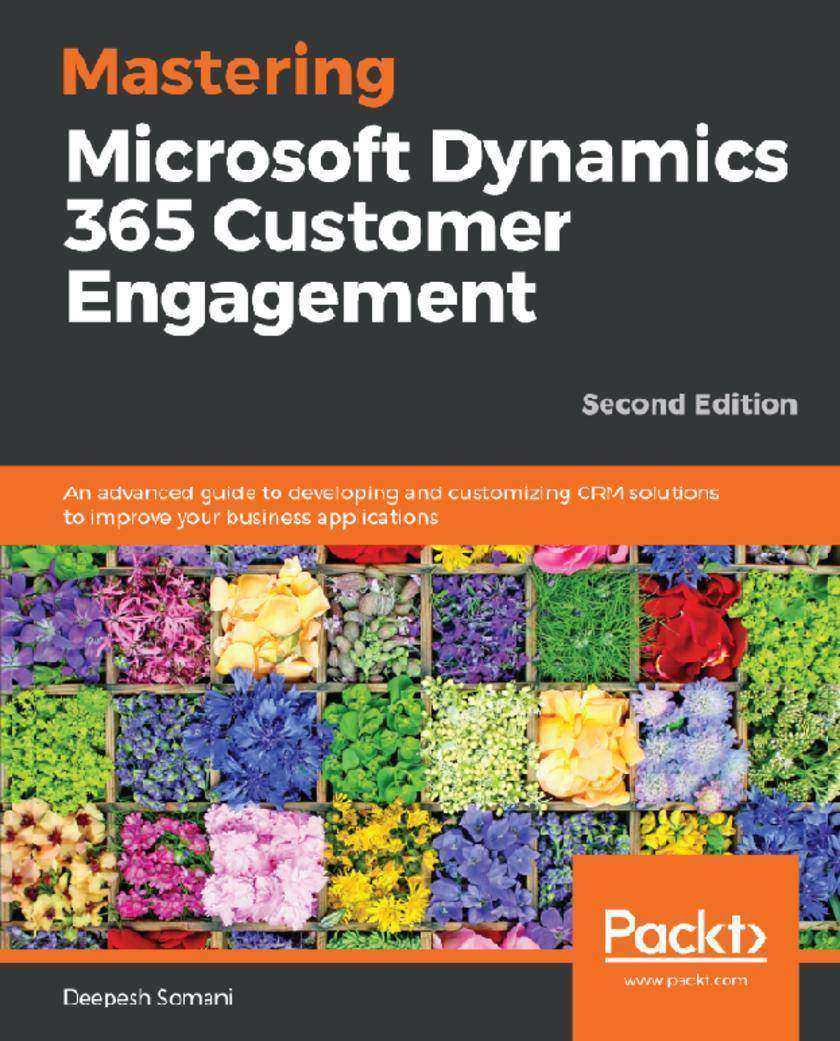
Mastering Microsoft Dynamics 365 Customer Engagement
¥90.46
A comprehensive guide packed with the latest features of Dynamics 365 for customer relationship management Key Features * Create efficient client-side apps and customized plugins that work seamlessly * Learn best practices from field experience to use Dynamics 365 efficiently * Unleash the power of Dynamics 365 to maximize your organization’s profits Book Description Microsoft Dynamics 365 is an all-in-one business management solution that's easy to use and adapt. It helps you connect your finances, sales, service, and operations to streamline business processes, improve customer interactions, and enable growth. This book gives you all the information you need to become an expert in MS Dynamics 365. This book starts with a brief overview of the functional features of Dynamics 365. You will learn how to create Word and Excel templates using CRM data to enable customized data analysis for your organization. This book helps you understand how to use Dynamics 365 as an XRM Framework, gain a deep understanding of client-side scripting in Dynamics 365, and create client-side applications using JavaScript and the Web API. In addition to this, you will discover how to customize Dynamics 365, and quickly move on to grasp the app structure, which helps you customize Dynamics 365 better. You will also learn how Dynamics 365 can be seamlessly embedded into various productivity tools to customize them for machine learning and contextual guidance. By the end of this book, you will have mastered utilizing Dynamics 365 features through real-world scenarios. What you will learn * Manage various divisions of your organization using Dynamics 365 customizations * Explore the XRM Framework and leverage its features * Provide an enhanced mobile and tablet experience * Develop client-side applications using JavaScript and the Web API * Understand how to develop plugins and workflows using Dynamics 365 * Explore solution framework improvements and new field types Who this book is for Mastering Microsoft Dynamics 365 Customer Engagement is for you if you have knowledge of Dynamics CRM and want to utilize the latest features of Dynamics 365. This book is also for you if you’re a skilled developer looking to move to the Microsoft stack to build business solution software. Extensive Dynamics CRM development experience will be beneficial to understand the concepts covered in this book.
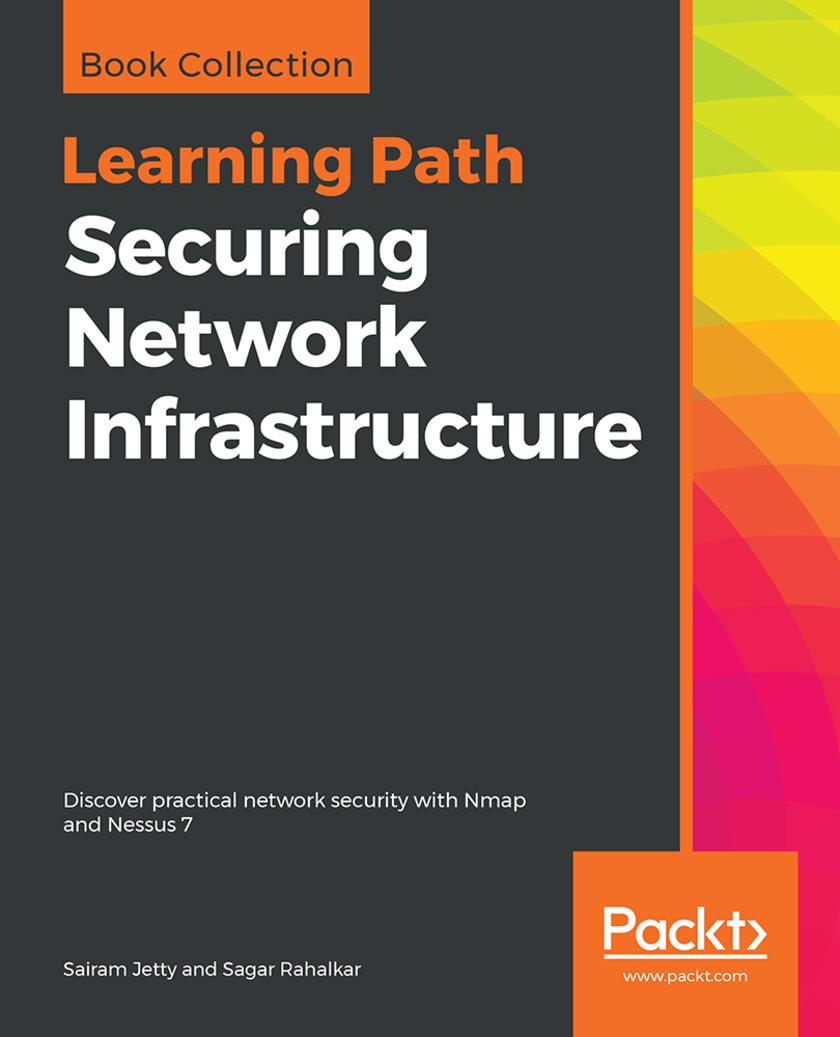
Securing Network Infrastructure
¥90.46
Plug the gaps in your network’s infrastructure with resilient network security models Key Features * Develop a cost-effective and end-to-end vulnerability management program * Explore best practices for vulnerability scanning and risk assessment * Understand and implement network enumeration with Nessus and Network Mapper (Nmap) Book Description Digitization drives technology today, which is why it’s so important for organizations to design security mechanisms for their network infrastructures. Analyzing vulnerabilities is one of the best ways to secure your network infrastructure. This Learning Path begins by introducing you to the various concepts of network security assessment, workflows, and architectures. You will learn to employ open source tools to perform both active and passive network scanning and use these results to analyze and design a threat model for network security. With a firm understanding of the basics, you will then explore how to use Nessus and Nmap to scan your network for vulnerabilities and open ports and gain back door entry into a network. As you progress through the chapters, you will gain insights into how to carry out various key scanning tasks, including firewall detection, OS detection, and access management to detect vulnerabilities in your network. By the end of this Learning Path, you will be familiar with the tools you need for network scanning and techniques for vulnerability scanning and network protection. This Learning Path includes content from the following Packt books: * Network Scanning Cookbook by Sairam Jetty * Network Vulnerability Assessment by Sagar Rahalkar What you will learn * Explore various standards and frameworks for vulnerability assessments and penetration testing * Gain insight into vulnerability scoring and reporting * Discover the importance of patching and security hardening * Develop metrics to measure the success of a vulnerability management program * Perform configuration audits for various platforms using Nessus * Write custom Nessus and Nmap scripts on your own * Install and configure Nmap and Nessus in your network infrastructure * Perform host discovery to identify network devices Who this book is for This Learning Path is designed for security analysts, threat analysts, and security professionals responsible for developing a network threat model for an organization. Professionals who want to be part of a vulnerability management team and implement an end-to-end robust vulnerability management program will also find this Learning Path useful.
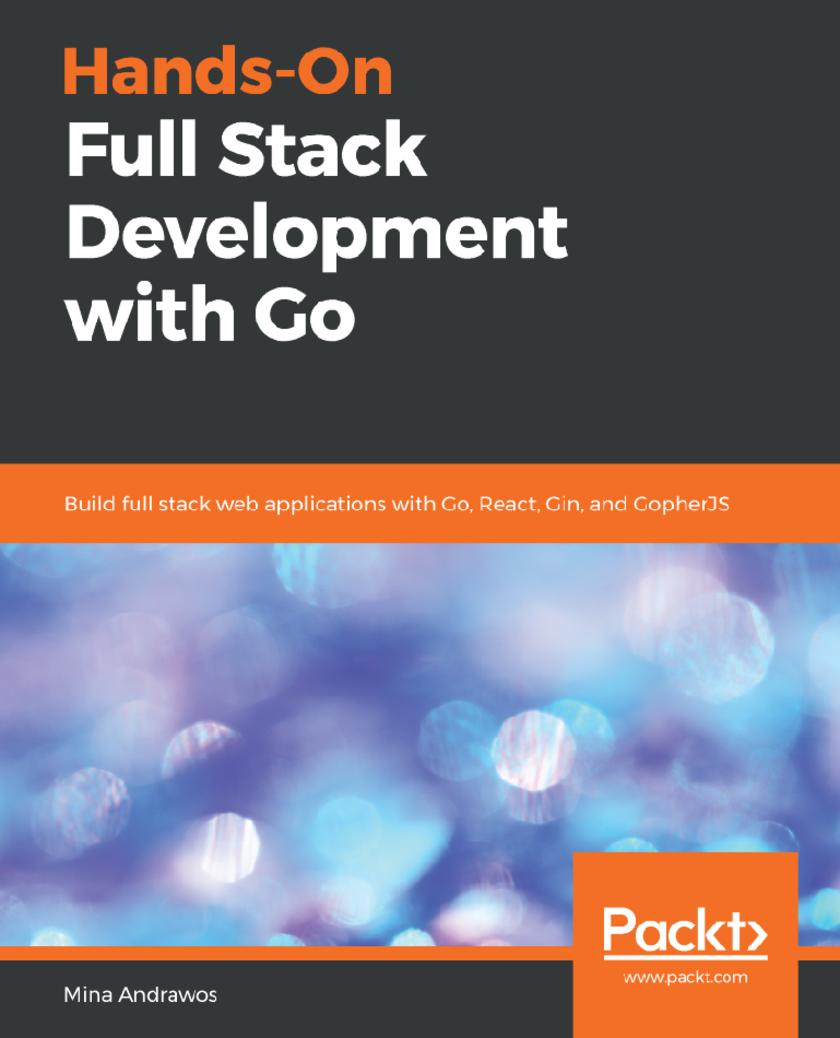
Hands-On Full Stack Development with Go
¥73.02
Create a real-world application in Go and explore various frameworks and methodologies for full-stack development Key Features * Organize your isomorphic codebase to enhance the maintainability of your application * Build web APIs and middleware in the Go language by making use of the popular Gin framework * Implement real-time web application functionality with WebSockets Book Description The Go programming language has been rapidly adopted by developers for building web applications. With its impressive performance and ease of development, Go enjoys the support of a wide variety of open source frameworks, for building scalable and high-performant web services and apps. Hands-On Full Stack Development with Go is a comprehensive guide that covers all aspects of full stack development with Go. This clearly written, example-rich book begins with a practical exposure to Go development and moves on to build a frontend with the popular React framework. From there, you will build RESTful web APIs utilizing the Gin framework. After that, we will dive deeper into important software backend concepts, such as connecting to the database via an ORM, designing routes for your services, securing your services, and even charging credit cards via the popular Stripe API. We will also cover how to test, and benchmark your applications efficiently in a production environment. In the concluding chapters, we will cover isomorphic developments in pure Go by learning about GopherJS. As you progress through the book, you'll gradually build a musical instrument online store application from scratch. By the end of the book, you will be confident in taking on full stack web applications in Go. What you will learn * Understand Go programming by building a real-world application * Learn the React framework to develop a frontend for your application * Understand isomorphic web development utilizing the GopherJS framework * Explore methods to write RESTful web APIs in Go using the Gin framework * Learn practical topics such as ORM layers, secure communications, and Stripe's API * Learn methods to benchmark and test web APIs in Go Who this book is for Hands-On Full Stack Development with Go will appeal to developers who are looking to start building amazing full stack web applications in Go. Basic knowhow of Go language and JavaScript is expected. The book targets web developers who are looking to move to the Go language.
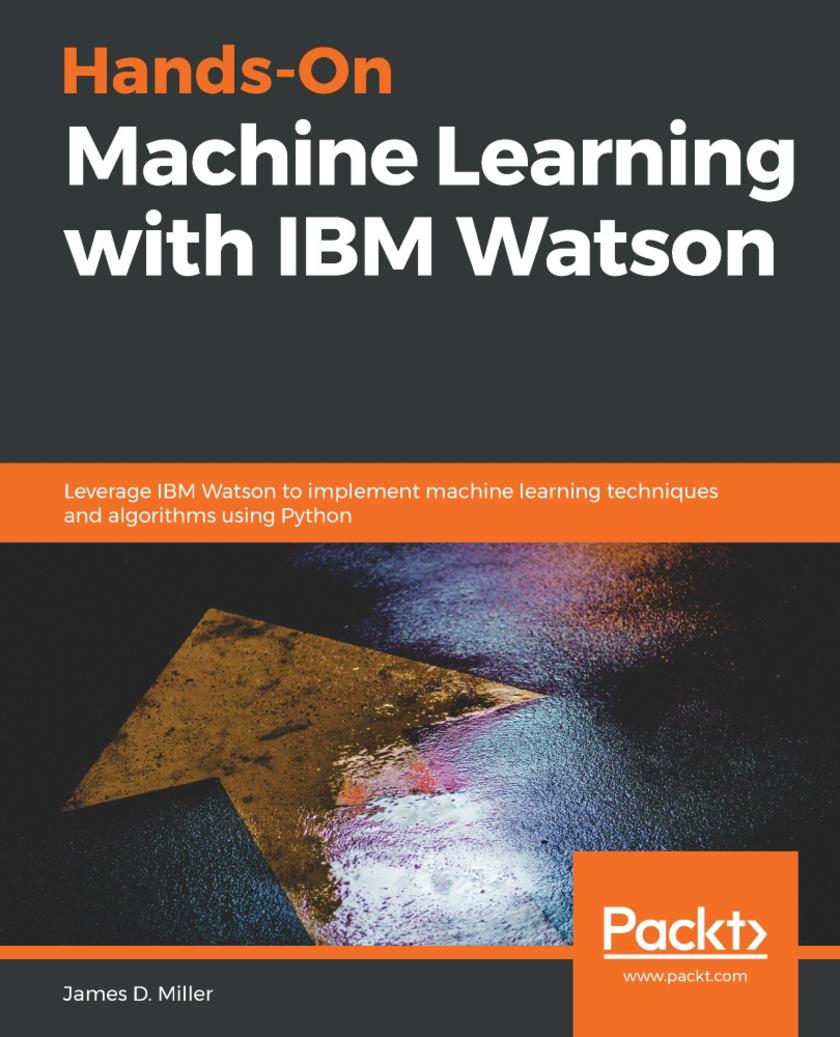
Hands-On Machine Learning with IBM Watson
¥73.02
Learn how to build complete machine learning systems with IBM Cloud and Watson Machine learning services Key Features * Implement data science and machine learning techniques to draw insights from real-world data * Understand what IBM Cloud platform can help you to implement cognitive insights within applications * Understand the role of data representation and feature extraction in any machine learning system Book Description IBM Cloud is a collection of cloud computing services for data analytics using machine learning and artificial intelligence (AI). This book is a complete guide to help you become well versed with machine learning on the IBM Cloud using Python. Hands-On Machine Learning with IBM Watson starts with supervised and unsupervised machine learning concepts, in addition to providing you with an overview of IBM Cloud and Watson Machine Learning. You'll gain insights into running various techniques, such as K-means clustering, K-nearest neighbor (KNN), and time series prediction in IBM Cloud with real-world examples. The book will then help you delve into creating a Spark pipeline in Watson Studio. You will also be guided through deep learning and neural network principles on the IBM Cloud using TensorFlow. With the help of NLP techniques, you can then brush up on building a chatbot. In later chapters, you will cover three powerful case studies, including the facial expression classification platform, the automated classification of lithofacies, and the multi-biometric identity authentication platform, helping you to become well versed with these methodologies. By the end of this book, you will be ready to build efficient machine learning solutions on the IBM Cloud and draw insights from the data at hand using real-world examples. What you will learn * Understand key characteristics of IBM machine learning services * Run supervised and unsupervised techniques in the cloud * Understand how to create a Spark pipeline in Watson Studio * Implement deep learning and neural networks on the IBM Cloud with TensorFlow * Create a complete, cloud-based facial expression classification solution * Use biometric traits to build a cloud-based human identification system Who this book is for This beginner-level book is for data scientists and machine learning engineers who want to get started with IBM Cloud and its machine learning services using practical examples. Basic knowledge of Python and some understanding of machine learning will be useful.
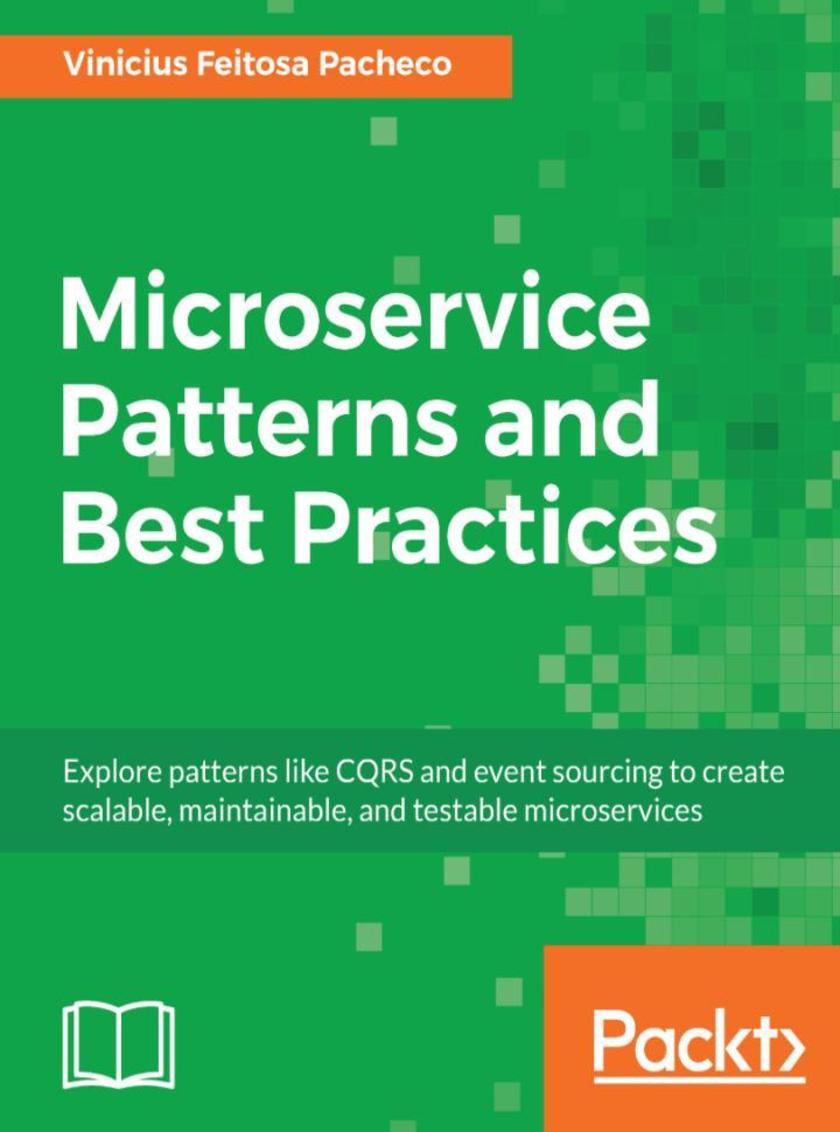
Microservice Patterns and Best Practices
¥81.74
Explore the concepts and tools you need to discover the world of microservices with various design patterns About This Book ? Get to grips with the microservice architecture and build enterprise-ready microservice applications ? Learn design patterns and the best practices while building a microservice application ? Obtain hands-on techniques and tools to create high-performing microservices resilient to possible fails Who This Book Is For This book is for architects and senior developers who would like implement microservice design patterns in their enterprise application development. The book assumes some prior programming knowledge. What You Will Learn ? How to break monolithic application into microservices ? Implement caching strategies, CQRS and event sourcing, and circuit breaker patterns ? Incorporate different microservice design patterns, such as shared data, aggregator, proxy, and chained ? Utilize consolidate testing patterns such as integration, signature, and monkey tests ? Secure microservices with JWT, API gateway, and single sign on ? Deploy microservices with continuous integration or delivery, Blue-Green deployment In Detail Microservices are a hot trend in the development world right now. Many enterprises have adopted this approach to achieve agility and the continuous delivery of applications to gain a competitive advantage. This book will take you through different design patterns at different stages of the microservice application development along with their best practices. Microservice Patterns and Best Practices starts with the learning of microservices key concepts and showing how to make the right choices while designing microservices. You will then move onto internal microservices application patterns, such as caching strategy, asynchronism, CQRS and event sourcing, circuit breaker, and bulkheads. As you progress, you'll learn the design patterns of microservices. The book will guide you on where to use the perfect design pattern at the application development stage and how to break monolithic application into microservices. You will also be taken through the best practices and patterns involved while testing, securing, and deploying your microservice application. At the end of the book, you will easily be able to create interoperable microservices, which are testable and prepared for optimum performance. Style and approach Comprehensive guide that uses architectural patterns with the best choices involved in application development
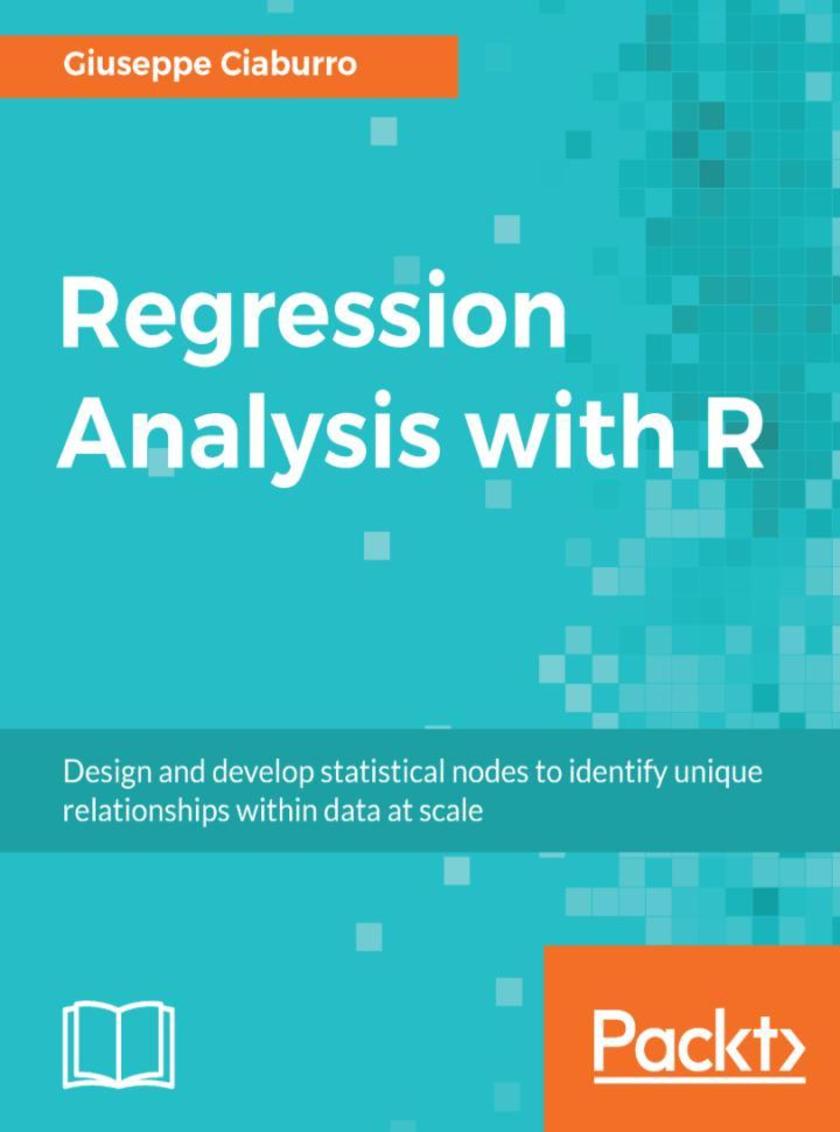
Regression Analysis with R
¥73.02
Build effective regression models in R to extract valuable insights from real data About This Book ? Implement different regression analysis techniques to solve common problems in data science - from data exploration to dealing with missing values ? From Simple Linear Regression to Logistic Regression - this book covers all regression techniques and their implementation in R ? A complete guide to building effective regression models in R and interpreting results from them to make valuable predictions Who This Book Is For This book is intended for budding data scientists and data analysts who want to implement regression analysis techniques using R. If you are interested in statistics, data science, machine learning and wants to get an easy introduction to the topic, then this book is what you need! Basic understanding of statistics and math will help you to get the most out of the book. Some programming experience with R will also be helpful What You Will Learn ? Get started with the journey of data science using Simple linear regression ? Deal with interaction, collinearity and other problems using multiple linear regression ? Understand diagnostics and what to do if the assumptions fail with proper analysis ? Load your dataset, treat missing values, and plot relationships with exploratory data analysis ? Develop a perfect model keeping overfitting, under-fitting, and cross-validation into consideration ? Deal with classification problems by applying Logistic regression ? Explore other regression techniques – Decision trees, Bagging, and Boosting techniques ? Learn by getting it all in action with the help of a real world case study. In Detail Regression analysis is a statistical process which enables prediction of relationships between variables. The predictions are based on the casual effect of one variable upon another. Regression techniques for modeling and analyzing are employed on large set of data in order to reveal hidden relationship among the variables. This book will give you a rundown explaining what regression analysis is, explaining you the process from scratch. The first few chapters give an understanding of what the different types of learning are – supervised and unsupervised, how these learnings differ from each other. We then move to covering the supervised learning in details covering the various aspects of regression analysis. The outline of chapters are arranged in a way that gives a feel of all the steps covered in a data science process – loading the training dataset, handling missing values, EDA on the dataset, transformations and feature engineering, model building, assessing the model fitting and performance, and finally making predictions on unseen datasets. Each chapter starts with explaining the theoretical concepts and once the reader gets comfortable with the theory, we move to the practical examples to support the understanding. The practical examples are illustrated using R code including the different packages in R such as R Stats, Caret and so on. Each chapter is a mix of theory and practical examples. By the end of this book you will know all the concepts and pain-points related to regression analysis, and you will be able to implement your learning in your projects. Style and approach An easy-to-follow step by step guide which will help you get to grips with real world application of Regression Analysis with R
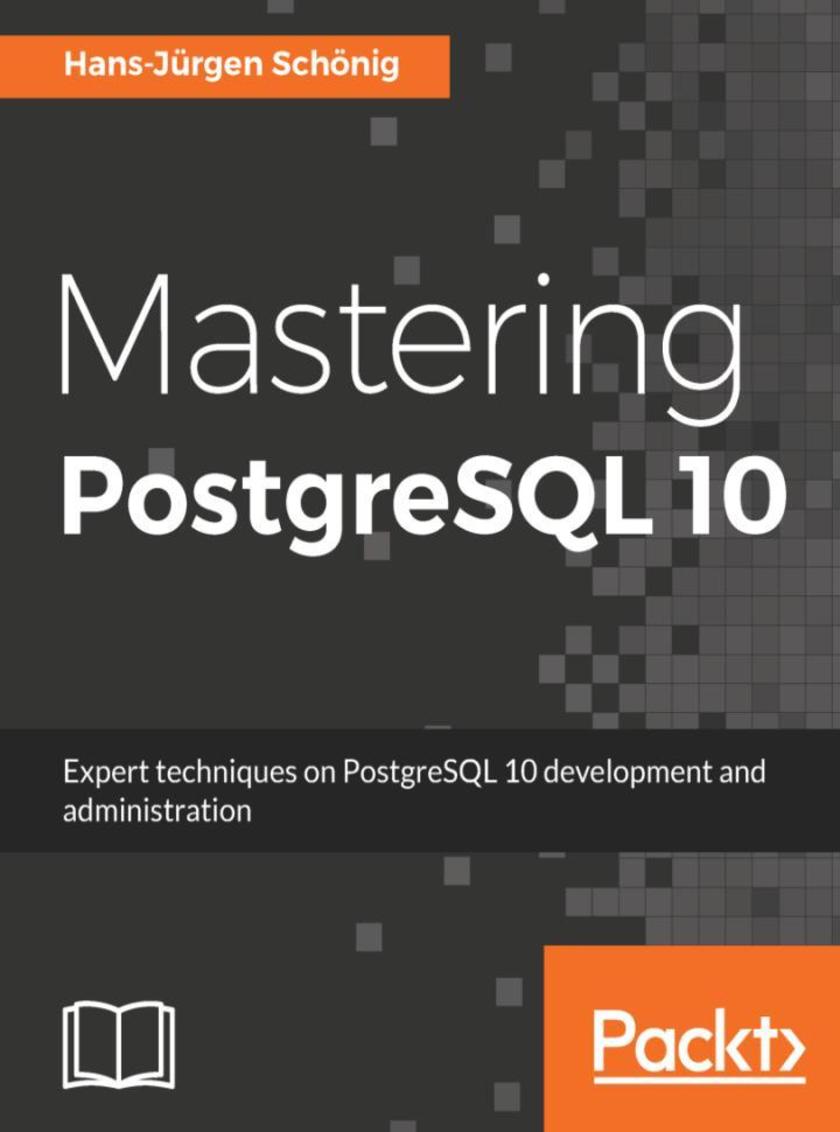
Mastering PostgreSQL 10
¥73.02
Master the capabilities of PostgreSQL 10 to efficiently manage and maintain your database About This Book ? Your one-stop guide to mastering advanced concepts in PostgreSQL 10 with ease ? Master query optimization, replication, and high availability with PostgreSQL ? Extend the functionalities of your PostgreSQL instance to suit your organizational needs with minimal effort Who This Book Is For If you are a PostgreSQL data architect or an administrator and want to understand how to implement advanced functionalities and master complex administrative tasks with PostgreSQL 10, then this book is perfect for you. Prior experience of administrating a PostgreSQL database and a working knowledge of SQL are required to make the best use of this book. What You Will Learn ? Get to grips with the advanced features of PostgreSQL 10 and handle advanced SQL ? Make use of the indexing features in PostgreSQL and fine-tune the performance of your queries ? Work with stored procedures and manage backup and recovery ? Master replication and failover techniques ? Troubleshoot your PostgreSQL instance for solutions to common and not-so-common problems ? Learn how to migrate your database from MySQL and Oracle to PostgreSQL without any hassle In Detail PostgreSQL is an open source database used for handling large datasets (big data) and as a JSON document database. This book highlights the newly introduced features in PostgreSQL 10, and shows you how you can build better PostgreSQL applications, and administer your PostgreSQL database more efficiently. We begin by explaining advanced database design concepts in PostgreSQL 10, along with indexing and query optimization. You will also see how to work with event triggers and perform concurrent transactions and table partitioning, along with exploring SQL and server tuning. We will walk you through implementing advanced administrative tasks such as server maintenance and monitoring, replication, recovery, high availability, and much more. You will understand common and not-so-common troubleshooting problems and how you can overcome them. By the end of this book, you will have an expert-level command of advanced database functionalities and will be able to implement advanced administrative tasks with PostgreSQL 10. Style and approach This mastering-level guide delves into the advanced functionalities of PostgreSQL 10

Practical Computer Vision
¥63.21
A practical guide designed to get you from basics to current state of art in computer vision systems. About This Book ? Master the different tasks associated with Computer Vision and develop your own Computer Vision applications with ease ? Leverage the power of Python, Tensorflow, Keras, and OpenCV to perform image processing, object detection, feature detection and more ? With real-world datasets and fully functional code, this book is your one-stop guide to understanding Computer Vision Who This Book Is For This book is for machine learning practitioners and deep learning enthusiasts who want to understand and implement various tasks associated with Computer Vision and image processing in the most practical manner possible. Some programming experience would be beneficial while knowing Python would be an added bonus. What You Will Learn ? Learn the basics of image manipulation with OpenCV ? Implement and visualize image filters such as smoothing, dilation, histogram equalization, and more ? Set up various libraries and platforms, such as OpenCV, Keras, and Tensorflow, in order to start using computer vision, along with appropriate datasets for each chapter, such as MSCOCO, MOT, and Fashion-MNIST ? Understand image transformation and downsampling with practical implementations. ? Explore neural networks for computer vision and convolutional neural networks using Keras ? Understand working on deep-learning-based object detection such as Faster-R-CNN, SSD, and more ? Explore deep-learning-based object tracking in action ? Understand Visual SLAM techniques such as ORB-SLAM In Detail In this book, you will find several recently proposed methods in various domains of computer vision. You will start by setting up the proper Python environment to work on practical applications. This includes setting up libraries such as OpenCV, TensorFlow, and Keras using Anaconda. Using these libraries, you'll start to understand the concepts of image transformation and filtering. You will find a detailed explanation of feature detectors such as FAST and ORB; you'll use them to find similar-looking objects. With an introduction to convolutional neural nets, you will learn how to build a deep neural net using Keras and how to use it to classify the Fashion-MNIST dataset. With regard to object detection, you will learn the implementation of a simple face detector as well as the workings of complex deep-learning-based object detectors such as Faster R-CNN and SSD using TensorFlow. You'll get started with semantic segmentation using FCN models and track objects with Deep SORT. Not only this, you will also use Visual SLAM techniques such as ORB-SLAM on a standard dataset. By the end of this book, you will have a firm understanding of the different computer vision techniques and how to apply them in your applications. Style and approach Step-by-step guide filled with real-world, practical examples for understanding and applying various Computer Vision techniques

R Deep Learning Projects
¥63.21
5 real-world projects to help you master deep learning concepts About This Book ? Master the different deep learning paradigms and build real-world projects related to text generation, sentiment analysis, fraud detection, and more ? Get to grips with R's impressive range of Deep Learning libraries and frameworks such as deepnet, MXNetR, Tensorflow, H2O, Keras, and text2vec ? Practical projects that show you how to implement different neural networks with helpful tips, tricks, and best practices Who This Book Is For Machine learning professionals and data scientists looking to master deep learning by implementing practical projects in R will find this book a useful resource. A knowledge of R programming and the basic concepts of deep learning is required to get the best out of this book. What You Will Learn ? Instrument Deep Learning models with packages such as deepnet, MXNetR, Tensorflow, H2O, Keras, and text2vec ? Apply neural networks to perform handwritten digit recognition using MXNet ? Get the knack of CNN models, Neural Network API, Keras, and TensorFlow for traffic sign classification ? Implement credit card fraud detection with Autoencoders ? Master reconstructing images using variational autoencoders ? Wade through sentiment analysis from movie reviews ? Run from past to future and vice versa with bidirectional Long Short-Term Memory (LSTM) networks ? Understand the applications of Autoencoder Neural Networks in clustering and dimensionality reduction In Detail R is a popular programming language used by statisticians and mathematicians for statistical analysis, and is popularly used for deep learning. Deep Learning, as we all know, is one of the trending topics today, and is finding practical applications in a lot of domains. This book demonstrates end-to-end implementations of five real-world projects on popular topics in deep learning such as handwritten digit recognition, traffic light detection, fraud detection, text generation, and sentiment analysis. You'll learn how to train effective neural networks in R—including convolutional neural networks, recurrent neural networks, and LSTMs—and apply them in practical scenarios. The book also highlights how neural networks can be trained using GPU capabilities. You will use popular R libraries and packages—such as MXNetR, H2O, deepnet, and more—to implement the projects. By the end of this book, you will have a better understanding of deep learning concepts and techniques and how to use them in a practical setting. Style and approach This book's unique, learn-as-you-do approach ensures the reader builds on his understanding of deep learning progressively with each project. This book is designed in such a way that implementing each project will empower you with a unique skillset and enable you to implement the next project more confidently.




 购物车
购物车 个人中心
个人中心



